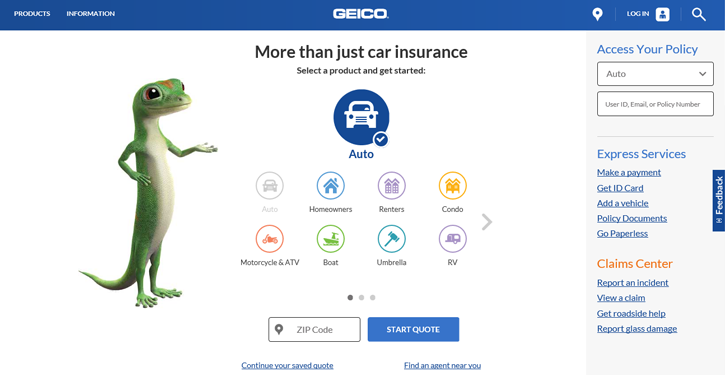Table of ContentsThe Which Parts Of A Life Insurance Policy Are Guaranteed To Be True? DiariesAbout How Much Life Insurance Do I Really NeedWhat Is Whole Life Insurance Policy for DummiesSee This Report about Which Of These Life Insurance Riders Allows The Applicant To Have Excess Coverage?Unknown Facts About Which Is Better Term Or Whole Life Insurance
So, now that you understand what they're after, how can you reduce your premium? While you can't do much about your age, you can give up cigarette smoking, use up regular workout and try reduce weight if you require to, to bring those the premiums down. Monetary professionals like Dave Ramsey recommend setting your death advantage at 1012 times your annual wage.
Let's take a look at Sarah from our example earlier and how a survivor benefit of 1012 times her income might truly help her household: Sarah's income is $40,000, and her policy survivor benefit is $400,000 ($ 40,000 times 10). If Sarah died, her household could invest the $400,000 in a mutual fund that makes a 10% return.
The interest that Sarah's family could make each year would cover Sarah's wage. And the initial quantity invested could remain there indefinitely as they utilize the interest to help survive life without Sarah. Most importantly, this supplies comfort and financial security for Sarah's enjoyed ones throughout a truly hard time.
Let the shared funds manage the financial investment part. Ready to get started? The relied on specialists at Zander Insurance can provide you a quick and complimentary quote on a term life policy in a couple of minutes. Don't put it off another daykeep your momentum going and get going now!. how to find out if someone has life insurance.
The Facts About How To Find Out If Life Insurance Policy Exists Revealed
Life insurance coverage is a contract between an insurance company and an insurance policy holder in https://apnews.com/Globe%20Newswire/8d0135af22945c7a74748d708ee730c1 which the insurer guarantees payment of a death benefit to called beneficiaries when the insured passes away. The insurance provider guarantees a survivor benefit in exchange for premiums paid by the policyholder. Life insurance coverage is a lawfully binding agreement.

For a life insurance policy to stay in force, the insurance policy holder should pay a single premium in advance or pay regular premiums over time. When the insured renting out your timeshare dies, the policy's named recipients will get the policy's face worth, or death benefit. Term life insurance policies expire after a particular variety of years.
A life insurance coverage policy is only as excellent as the monetary strength of the company that releases it. State guaranty funds might pay claims if the company can't. Life insurance provides financial backing to enduring dependents or other beneficiaries after the death of a guaranteed. Here are some examples of people who may need life insurance coverage: If a parent dies, https://www.globenewswire.com/news-release/2020/03/12/1999688/0/en/WESLEY-FINANCIAL-GROUP-SETS-COMPANY-RECORD-FOR-TIMESHARE-CANCELATIONS-IN-FEBRUARY.html the loss of his/her earnings or caregiving abilities could produce a financial difficulty.
For children who need long-lasting care and will never be self-dependent, life insurance coverage can ensure their requirements will be fulfilled after their moms and dads pass away. The survivor benefit can be utilized to money a special needs trust that a fiduciary will manage for the adult kid's advantage. Married or not, if the death of one adult would suggest that the other might no longer afford loan payments, maintenance, and taxes on the residential or commercial property, life insurance coverage may be a good concept.
The Single Strategy To Use For How Long Do You Have To Claim Life Insurance
Many adult children sacrifice by requiring time off work to care for an elderly moms and dad who requires help. This aid might likewise include direct monetary assistance. Life insurance coverage can assist compensate the adult child's expenses when the moms and dad dies. Young person without dependents rarely need life insurance, but if a moms and dad will be on the hook for a kid's debt after his/her death, the kid might want to bring sufficient life insurance coverage to pay off that debt.
A 20-something grownup may purchase a policy even without having dependents if there is an expectation to have them in the future. Life insurance can supply funds to cover the taxes and keep the full value of the estate undamaged.' A little life insurance policy can offer funds to honor a liked one's passing.
Rather of picking in between a pension payment that offers a spousal advantage and one that does not, pensioners can choose to accept their full pension and utilize a few of the cash to purchase life insurance coverage to benefit their spouse - how much does life insurance cost. This strategy is called pension maximization. A life insurance policy can has 2 main parts - a survivor benefit and a premium.
The survivor benefit or stated value is the amount of money the insurance coverage company ensures to the recipients determined in the policy when the insured passes away. The insured may be a parent, and the beneficiaries may be their kids, for example. The guaranteed will choose the preferred survivor benefit quantity based upon the beneficiaries' projected future requirements.
The Definitive Guide to How Much Do Life Insurance Agents Make
Premiums are the cash the policyholder pays for insurance. The insurance company must pay the survivor benefit when the insured dies if the policyholder pays the premiums as required, and premiums are identified in part by how likely it is that the insurance provider will have to pay the policy's death advantage based on the insured's life span.
Part of the premium also approaches the insurance provider's operating costs. Premiums are greater on policies with larger survivor benefit, people who are greater risk, and irreversible policies that build up money value. The money value of irreversible life insurance coverage serves two purposes. It is a cost savings account that the insurance policy holder can utilize during the life of the insured; the money collects on a tax-deferred basis.
For instance, the insurance policy holder might get a loan against the policy's money worth and need to pay interest on the loan principal. The insurance policy holder can likewise use the money worth to pay premiums or purchase extra insurance coverage. The money value is a living advantage that remains with the insurance coverage business when the insured dies.

The policyholder and the guaranteed are generally the very same individual, however sometimes they may be different. For example, a service may buy key individual insurance on a crucial employee such as a CEO, or a guaranteed may sell his/her own policy to a 3rd party for money in a life settlement.
9 Easy Facts About What Is Term Life Insurance Explained
Term life insurance coverage lasts a particular variety of years, then ends. You select the term when you get the policy. Common terms are 10, 20, or 30 years. The premiums are the very same every year. The premiums are lower when you're younger and increase as you age. This is likewise called "annual renewable term." This remains in force for the insured's entire life unless the policyholder stops paying the premiums or surrenders the policy.
In this case the policyholder pays the whole premium in advance instead of making regular monthly, quarterly, or yearly payments.Whole life insurance coverage is a kind of long-term life insurance coverage that builds up cash worth. A kind of permanent life insurance coverage with a cash value part that makes interest, universal life insurance has premiums that are comparable to term life insurance. This is a kind of universal life insurance coverage that does not develop cash value and typically has lower premiums than whole life. With variable universal life insurance, the insurance policy holder is allowed to invest the policy's money value. This is a type of universal life insurance coverage that lets the policyholder earn a repaired or equity-indexed rate of return on the money worth element.